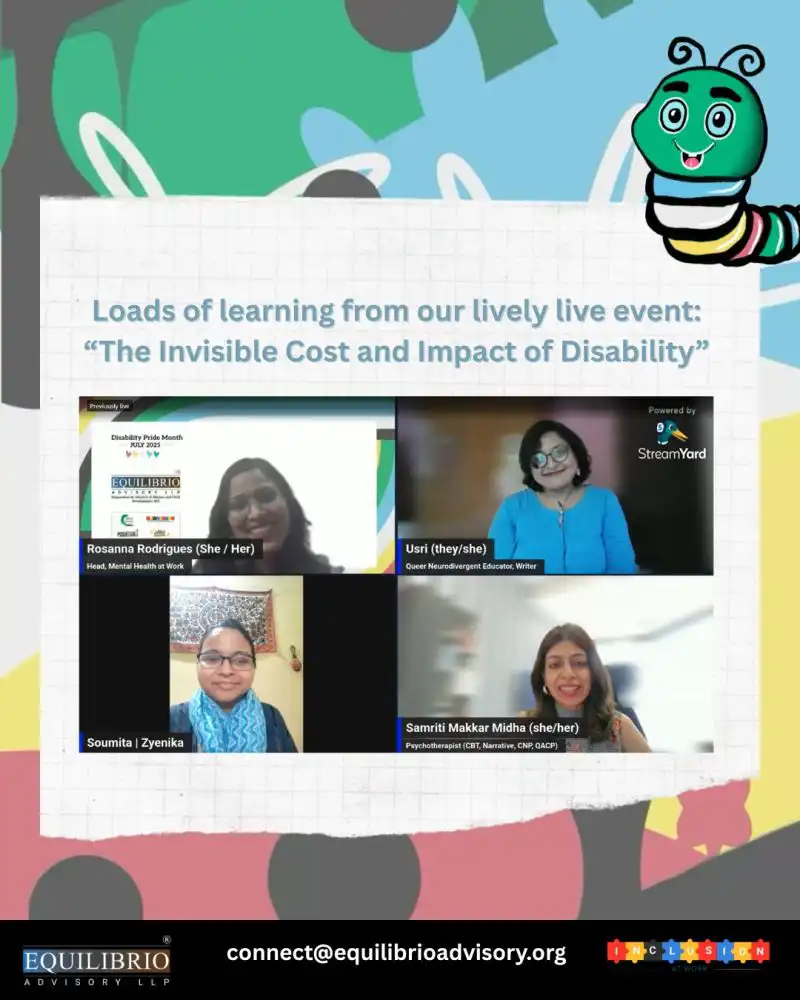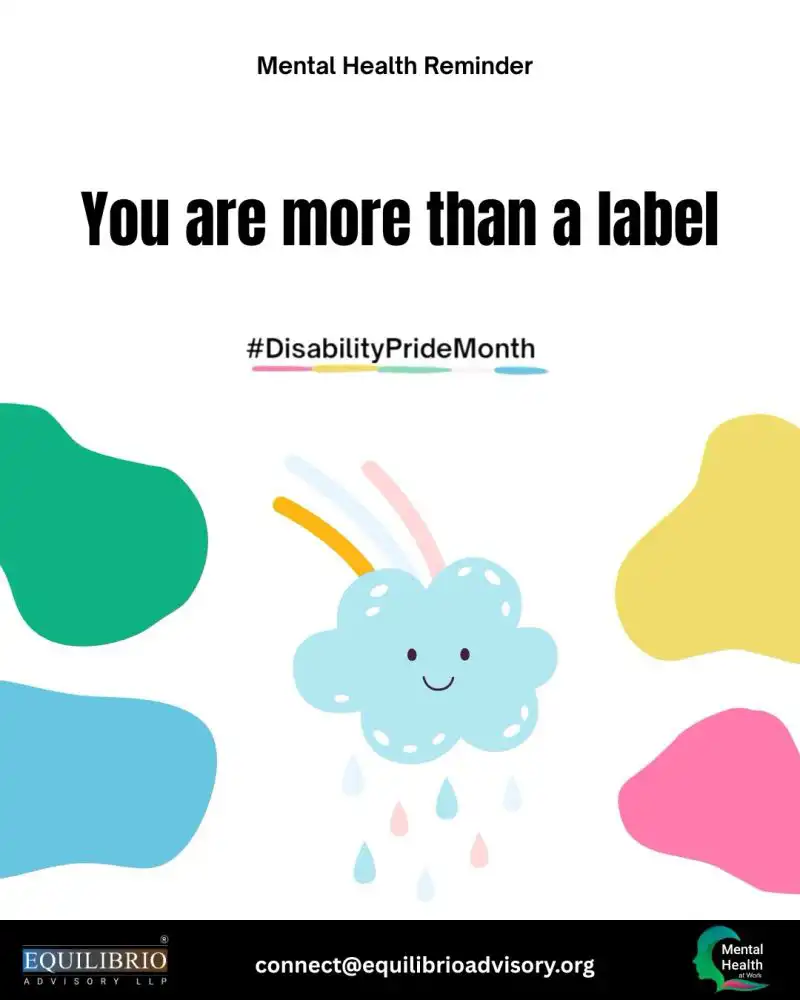The Equilibrio Gazette
A brief buletin for building safe workspaces!
1st August 2025 | Issue No. 92
Upcoming Events
Mark your calendars! In this section, we highlight an upcoming event you won't want to miss.
In the Spotlight!
Explore ways to build your knowledge and capacity with our team of in-house experts!
The encouraging feedback highlights our shared dedication to safety and inclusion.
Join us again on 29th July as we continue this vital conversation.”
Our amazing speakers shared deeply insightful, intersectional perspectives on navigating an often inaccessible world—from education to medico-legal systems and public spaces. Missed it? Catch our live here.
Stay Current!
~ Spotlighting Landmark Judgments since passing of the Law!
I - LEGAL UPDATES
II - Exploring Intersections
Stay tuned to meet the mandate with us!
Engage with us!
Here's your weekly food for thought through a Fun Fact or Quiz.
Did you know that Matthew DeMeritt, a disabled artist, was the face behind the adorable character E.T. in Steven Spielberg’s iconic film, E.T. the Extraterrestrial?
A 12-year-old Matthew, who was born without legs, donned a 4-feet rubber costume and brought E.T. to life. While puppets were used too, Matthew came in when the character had to walk around—most famously in the unforgettable scene where E.T. gets drunk. Despite the film being a classic, Matthew’s unique contribution remained unseen for years. Now, fans are celebrating his iconic performance, reminding us how vital it is to recognize disabled artists whose stories are often hidden behind the scenes.

Have a burning question about POSH? Maybe Mental Health at Work, Child safety or DEI&B strategies? Drop us an email with your query and we would love to answer it, in all seriousness.
Curious Cat:
What are chronic invisible disabilities, and how can we support individuals living with them?
Answer:
Chronic invisible disabilities are long-term health conditions that significantly impact a person’s life but aren’t immediately apparent to others. Examples include fibromyalgia, chronic fatigue syndrome, autoimmune diseases (like anemia, hepatitis or Lupus), and mental health concerns like anxiety or depression. Because these disabilities aren’t visible, people often face misunderstanding, skepticism, or stigma.
Supporting someone with an invisible disability means practicing empathy and patience. Encourage open communication without judgment, believe their experiences, and avoid making assumptions about their capabilities. Simple actions like offering flexible work arrangements, providing accessible environments, and raising awareness can make a huge difference. By recognizing that not all disabilities are visible, we can instill inclusivity and respect for everyone’s unique challenges.
If you would like to create a more inclusive workspace for employees with chronic disabilities, reach out to us at connect@equilibrioadvisory.org
Here’s all the tools you need to build safe and equitable workspaces!
Drop us a Hey, to get started!





















